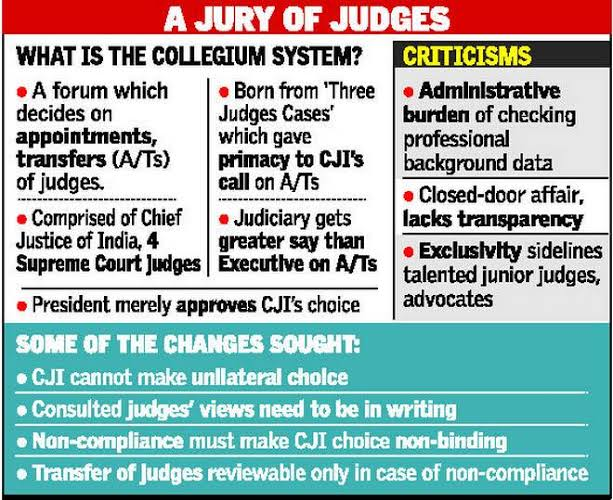Draft National Higher Education Qualification Framework
Figure 1: No Copyright Infringement Intended
Context:
- As part of the National Education Policy (NEP) 2020, the University Grants Commission (UGC) recently released a Draft National Higher Educational Qualification Framework (NHEQF) to assess students at various levels.
About NHEQF:
- The framework isn't meant to create a standardised curriculum or a national common curriculum. The goal is to bring all HEIs (Higher Education Institutions) to a standard benchmarking level in order to ensure that all institutions are offering high-quality education.
- The proposed framework outlines various "descriptors" or parameters for each learning level that can be used to assess pupils at each level.
- Among the parameters are generic learning outcomes, constitutional, ethical, and moral principles, employment-ready skills, entrepreneurship attitude, and knowledge and skill application, to name a few.
- The NHEQF categorises parameters into five levels: 5, 6, 7, and 10.
- The school education is covered by Levels 1 through 4.
- Learning outcomes acceptable for the first year (first two semesters) of an undergraduate programme of study are represented by NHEQF level 5, whereas learning outcomes appropriate for a PhD programme of study are represented by NHEQF level 10.
- According to the NHEQF, students must possess and display the desired graduate profile/attributes after completing a programme of study.
- It also establishes the amount of credits required to complete the four-year undergraduate programme, postgraduate degrees, and doctoral degrees at various levels.
Background of National Qualification Framework:
- India recognised the need for a National Qualifications Framework (NQF) for both general education and vocational education and training (VET).
- The National Vocational Qualifications Framework (NVQF) was produced by the Ministry of Labour and Employment, whereas the Vocational Education Qualifications Framework was developed by the Ministry of Human Resource Development (renamed Ministry of Education after NEP 2020 recommendations) (NVEQF).
- These two frameworks were taken into account and utilised in the creation of the National Skills Qualifications Framework (NSQF), which was announced in 2013.
Issues plaguingIndian Higher Education:
Issues of Funding:
- Higher education is a low-priority area for state governments, therefore their investment has been declining year after year. Their sense of estrangement is exacerbated by the University Grant Commission's system of direct releases to state institutions, which bypasses state governments.
- For decades, there has been a call to increase education spending to 6% of GDP.
Low Enrolnment:
- The gross enrolment ratio (GER) in higher education is 24.5, which means that just about 25 out of every 100 adolescents eligible for higher education are pursuing it.
- India's campuses are still lacking in terms of research and internationalisation.
- Only 1.7 percent of colleges provide PhD programmes, while only 33 percent offer postgraduate programmes.
Poor Regulatory system:
- The country has a terrible track record, with the University Grants Commission (UGC) and the All India Council for Technical Education (AICTE) serving as more controllers than facilitators of education.
- The UGC has begun to appear under-equipped as a regulator of India's higher education, a coordinator of a wide range of institutions, and a protector of standards.
- Regulatory agencies with licencing powers harmed professional higher education's autonomy, causing a significant imbalance in the diarchy they were in and dividing general and professional higher education in several key fields of knowledge.
- Privately established institutions in medicine, engineering, and other professions provided the foundation for severe control to become justified. The ability to issue licences resulted in corruption.
Ranking systems:
- Additional autonomy granted based on NAAC ranking and NIRF membership raises concerns about these evaluation systems. They are neither genuine nor legitimate. The mechanisms by which they are created are the source of their lack of authenticity.
- The NAAC is based on a procedure of inspection. Its dependability is harmed by both ends of any inspection procedure in our ethos.
- The necessity for NIRF developed from India's low performance in worldwide ranking systems, but how would Indian institutions of higher learning improve if they were ranked among themselves.
Government Work for Higher Education
- Universities and Colleges Have Been Granted Graded Autonomy: A three-tiered graded autonomy regulation structure has been implemented, with categorization based on accreditation scores. Universities in Category I and II will have extensive autonomy in terms of conducting exams, prescribing grading systems, and even announcing results.
- Global Initiative for Academics Network (GIAN): The Global Initiative for Academics Network (GIAN) is a network of academics from around the world. The programme aims to bring in eminent academicians, entrepreneurs, scientists, and specialists from leading institutions throughout the world to lecture in India's higher education institutions.
- AISHE (All India Survey on Higher Education): The survey's main goals are to identify and capture all higher education institutions in the country, as well as to collect data on various areas of higher education from all higher education institutions.




1.png)
